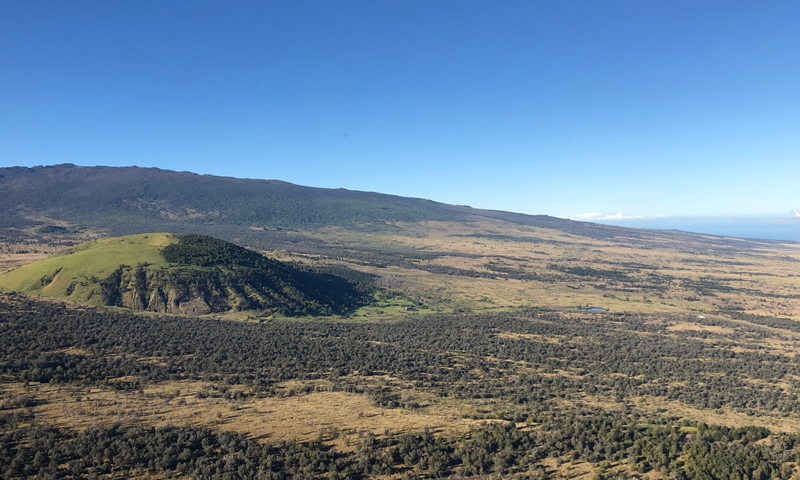Understanding plants of the past to inform community reforestation efforts in the future: A place-based approach for promoting resilience in the Puʻuwaʻawaʻa community-based subsistence forest area, North Kona, Hawaiʻi

We propose to investigate past plant communities at the Puʻuwaʻawaʻa Cinder Cone (PCC) in North Kona, Hawaiʻi to inform restoration planning. The PCC is the oldest known geological feature on Hualālai Volcano with the most well-developed soil for restoration of diverse dry and mixed-mesic forest in the ahupua‘a (land division). The area supports a strong history of successful restoration, thereby providing an excellent opportunity to study how changing climate might affect decisions made about plant community composition and restoration methods.
Research will be organized into three parts:
- a biocultural-survey approach, using historical documents and existing oral-history interviews;
- a biophysical data-gathering approach, using all available location-based plant species information from the past and present; and
- a geo-spatial modeling approach, using GIS layers and/or trait-based web tools.
Research questions we hope to answer, include the following.
- What plants were historically present on the Puʻuwaʻawaʻa cone (native, Polynesian introductions, and non-native)?
- What were the relative abundances of these plants?
- How did plant communities on the PCC shift over time, particularly in relation to various disturbance factors?
- What plant species or communities may be suitable and most resilient to future projected climate change?
- How can this knowledge inform a community-led reforestation project?
We plan to produce a final report, using the large diversity of sources available, that will identify both plant species that inhabited the PCC in the past and those that are likely to be most suitable for reforestation planting efforts, given projected climate changes in the future. In addition to being highly useful by our collaborative team of community members and agency representatives for planning, this work will help inform reforestation efforts across leeward Hawaiʻi.

PROJECT DETAILS
FUNDED:
FY2020
PI:
Jonathan Price
Professor of Geography , UH Hilo
Graduate Scholar:
David Russell
Restoration & Outplanting Field Assistant, Nāpuʻu Natural Resources Management
Collaborator:
Hannah Springer Puʻuwaʻawaʻa Advisory Council
Kuʻulei Keakealani Cultural Director, Hui Aloha Kīholo
Elliott Parsons Resource Manager, DOFAW
Edith Adkins Resource Manager, DOFAW
Ulu Ching Facilitator, Conservation International
Kainana Francisco Natural Resource Specialist, US Forest Service
Christian Giardina Research ecologist, US Forest Service
Katie Kamelamela Post-doctoral fellow, Akaka Foundation for Tropical Forests
Rebekah Ohara CEO, Akaka Foundation for Tropical Forests
Tamara Ticktin Professor of Botany, UH Mānoa
Lauren Weisenberger Plant Recovery Coordinator, U.S. Fish & Wildlife Service

